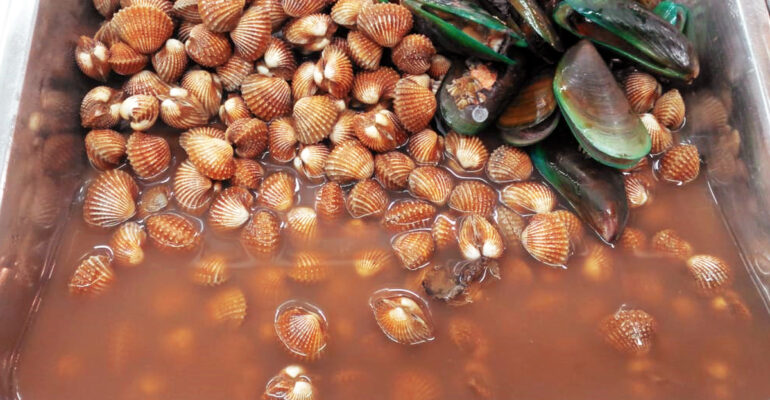IPB University Students Managed to Reduce Clam Microplastic

Plastic is one of the sources of ocean pollution, which extends the chain of problems currently happing. Plastic component can disintegrate to microplastic which would be consumed by marine organisms. In the long run, these organisms will bring negative impacts if consumed by humans.
That is what inspires Edy Ridwanda Sembiring, Silva Fauziah, and Siti Hidayanta, students of Department of Aquatic Products Technology, IPB University to conduct a research about marine organisms contaminated by microplastic. The research attempts to lower microplastic content in marine organisms to increase food safety. “Microplastic is plastic particle in the size of 1 micrometer to 5 micrometers derived from plastic waste parts intentionally produced for cosmetics. The previous study shows that microplastic could be consumed by marine organisms, intentionally or not. When we further read the literatures, we found that microparticle might be taken out with saltwater diffusion,” said Edy.
Through this study, Edy and the team, guided by Dr Ir Bustami Ibrahim, MSc managed to get the funding from Ministry of Research, Technology, and Higher Education (Kemenristekdikti) with the Student Creativity Program in Research (PKMPE) 2019. The modification of saltwater density diffusion is a method to separate microparticle from meat by freezing the meat until pores are formed, then flowing in the saltwater from bottom to top (up flow) through meat pores, so that microplastic could float and separate from the meat. This study method is still a laboratory-scale system prototype and is not yet implemented as a device. This method could be applied directly by people if there is already a device design.
Edy explained that the microplastic found in clam samples in this study is in the form of fiber and fragments in various sizes. “The result that we got is quite surprising. The samples we picked up from two markets in Bogor City showed that there are microplastic particles in blood clams. Besides, the samples from Lampung waters also contain microplastic. Plastic aggregated in blood clams is polyethylene terephthalate (PET), which is generally used to produce mineral water bottle. It means that water bottle disintegrate to microparticles which aggregate in clams,” he said.
He adds that microplastic found in fresh clams before any treatment was applied was very large in amount that it couldn’t be counted because it clumped in high amount. “After the treatment of saltwater density diffusion modification, the amount shrinks to two particles with 15 and 20 micrometers in size in one of the clams. One particle with the size of 110 micrometers is found in the other clam. The method we use is already quite effective to reduce microplastic in clam,” he said. (Ard)



